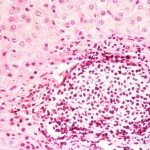Link to Pubmed [PMID] – 16447259
Hepatology 2006 Feb;43(2 Suppl 1):S164-72
Hepatitis A virus (HAV), the causative agent of type A viral hepatitis, is an ancient human virus that was first identified almost 35 years ago. It has several characteristics that make it unique among the Picornaviridae, particularly in terms of its mechanisms of polyprotein processing and virion morphogenesis, and which likely contribute to its pathobiology. Although efficacious vaccines containing formalin-inactivated virus produced in cell culture have been licensed in multiple countries, their use has been limited by cost considerations. Changes in public health sanitation and generally increasing standards of living are leading to a decreasing incidence of acute hepatitis A worldwide, with the result that the prevalence of preexisting immunity among adults is declining in many regions. These changes in the epidemiology of HAV may paradoxically enhance the disease burden, as greater numbers of individuals become infected at older ages when disease is more likely to be clinically evident, thus providing greater incentives for vaccine utilization.

